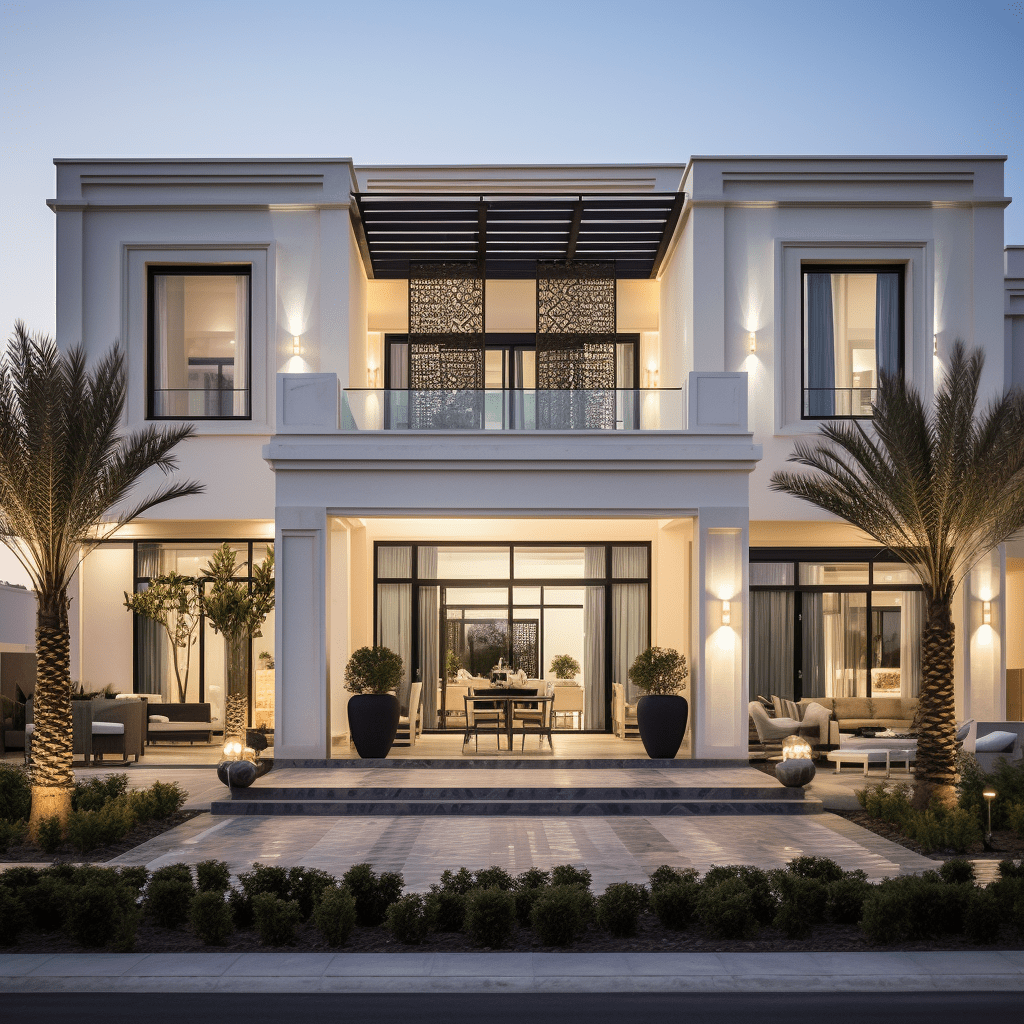Residential Architecture in the GCC: Celebrating the Diversity of Housing Options
The dynamic region of the GCC has become a hub of architectural innovation, particularly in the realm of residential design. As the economy flourishes and populations grow, the demand for various types of residential properties has soared, giving rise to a rich tapestry of architectural marvels. From luxurious villas and mansions that exude elegance to groundbreaking high-rise apartment buildings, the GCC presents an impressive array of housing options that combine practicality, luxury, and sustainability.
Luxurious Villas and Mansions:
The GCC is renowned for its opulent villas and mansions, which epitomize grandeur and luxury. These properties often feature spacious layouts, extravagant interiors, and state-of-the-art amenities. Traditional Arabian architecture blends seamlessly with modern influences, resulting in stunning designs that reflect the region’s rich cultural heritage.
One notable example is the Al Qasr Palace in Abu Dhabi, United Arab Emirates. This breathtaking mansion showcases Arabian architectural elements, such as domes, arches, and intricate geometric patterns. The interior boasts expansive living spaces, ornate decorations, and lavish furnishings, creating an atmosphere of regal elegance.
Innovative High-Rise Apartment Buildings:
As urbanization continues to shape the GCC’s skyline, innovative high-rise apartment buildings have become increasingly prevalent. These structures not only offer residential units but also provide a range of amenities and services, including recreational facilities, shopping centers, and landscaped gardens.
The Burj Khalifa in Dubai, United Arab Emirates, stands tall as a symbol of architectural excellence. This iconic skyscraper is not only the tallest building in the world but also a residential marvel. Its design incorporates sustainability features such as energy-efficient systems, solar panels, and water recycling mechanisms. The apartments within the Burj Khalifa offer panoramic views of the cityscape and provide residents with a luxurious and comfortable living experience.
Sustainable Housing Solutions:
With an increasing emphasis on sustainability and environmental consciousness, the GCC has witnessed a rise in eco-friendly residential architecture. Innovative designs focus on minimizing energy consumption, utilizing renewable resources, and implementing green building practices.
One outstanding example is the Msheireb Downtown Doha project in Qatar. This development combines traditional Qatari architecture with modern sustainable practices. The houses feature natural ventilation systems, solar panels, and efficient insulation, reducing the overall carbon footprint. The integration of green spaces, walkability, and efficient public transportation systems further enhances the sustainability aspect of the community.
Traditional Arabian Homes:
While modern architectural styles dominate the GCC’s residential landscape, there is still a strong appreciation for traditional Arabian homes. These homes exhibit unique design elements, such as courtyards, wind towers, and intricate woodwork, reflecting the region’s cultural heritage.
The Al-Balad district in Jeddah, Saudi Arabia, is renowned for its traditional houses known as “Baladis.” These homes feature ornate facades adorned with intricate latticework known as “Rawashin.” The interiors often include spacious courtyards, elegant arches, and meticulously crafted details, providing residents with a glimpse into the region’s rich history and culture.
Residential architecture in the GCC is a testament to the region’s rapid development and cultural diversity. From opulent villas and mansions to innovative high-rise apartment buildings, the housing options available in the GCC cater to various lifestyles and preferences. The blend of traditional Arabian design with modern influences, coupled with a focus on sustainability, has created a unique architectural landscape that is both aesthetically pleasing and environmentally conscious. As the GCC continues to grow and evolve, residential architecture will undoubtedly play a crucial role in shaping the region’s future urban spaces.

